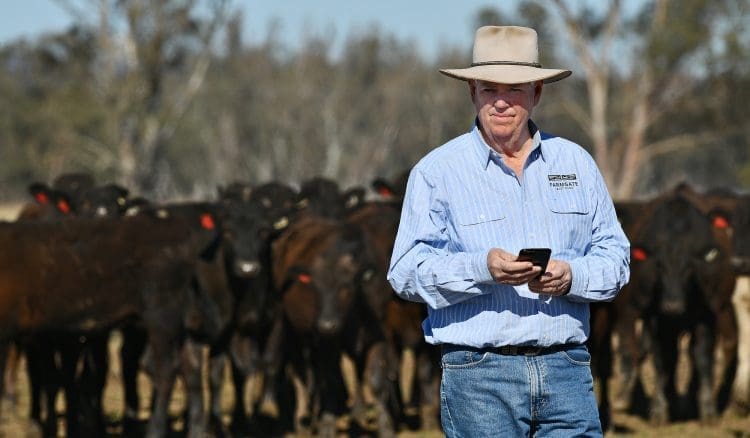MORE accurate and comprehensive knowledge about the Australian beef industry’s size, composition and direction is the key objective in a new beef producer survey to be launched by Meat & Livestock Australia later this year.
The industry-funded project follows widespread criticism earlier this year about the methodology and accuracy of national herd size assumptions, following MLA’s and the Australian Bureau of Statistics’ annual summaries at the start of this year.
 Indeed, ABS earlier this year discontinued certain parts of its national beef herd summary, due to lack of, or inaccurate participation in the ABS survey among beef producers.
Indeed, ABS earlier this year discontinued certain parts of its national beef herd summary, due to lack of, or inaccurate participation in the ABS survey among beef producers.
In parallel, the Australian sheep industry has maintained a similar survey for at least the past decade, providing valuable insights into industry production performance and trends. The feedback provides vital information around government and industry support around research and development, government funding support, sustainability progress in areas like methane emissions and a range of other areas. But lack of uptake has always been a challenge in an equivalent survey in the beef industry.
MLA foreshadowed the launch of the Beef Producer Intentions Survey in this Beef Central article earlier this year, following discussion about the reliability of national herd size estimates.
The construct and scope of MLA’s inaugural survey – intended at this stage to happen annually – is being worked on now.
Key to the success of the new survey will be producer participation. All MLA beef producer members will be offered the opportunity to contribute to the online survey, on a confidential basis. Currently there are 42,381 grassfed beef-producing MLA members. To further incentivise engagement, they will be provided an opportunity to benchmark their own performance in traits like calving percentage, at a regional level, against others of similar size.
It is unclear at this stage whether non-MLA members will be given the chance to participate, but at the very least, there is now five or six months for producers to register as an MLA member to take part.
MLA senior market information analyst Ripley Atkinson said MLA and its market information team was currently in the development stage, drafting the first wave of the Beef Producers Intentions Survey, which is due to be collected in October/November this year.
“We’re going to run the online survey similarly to sheep, and run it three times a year, book-ended by the southern Australian autumn and spring calving periods and Northern Australia’s wet season to ensure we capture the most accurate data that covers all of the herd at key management times throughout the year,” Mr Atkinson said.
“The first two will be ‘full waves’ taking no longer than 15 minutes to complete, taking place around October/November this year, and April/May next year, to coincide with the finish and start of the wet season. It also ties in with spring and autumn calving in the southern Australian herds.”
“During the middle of 2024 we’ll also run a ‘pulse’ survey, which will take no more than five minutes for a producer to complete, that will provide a check-up on how things are going and actual sales against those expected from the May wave,”
“We’re excited to be developing and delivering this survey with our third-party provider and strongly believe it’s going to be of great benefit for producers and the industry more broadly, in informing better business decisions.”
The project will not focus on ‘big picture’ topics like producers’ carbon intentions, but will be primarily market information focused.
Some of the data to be captured includes producer sentiment, sales channels intentions, responses relating to on and off-farm decisions and an array of other helpful metrics. Data will also be segmented by state level, and on a producer herd-size level. Producers will be given the option of identifying themselves as breeders, backgrounders, grass finishers, traders or combinations of these.
The opportunity for specific ‘verbatim’ responses will also be provided in some questions, allowing respondents to elaborate on their decisions around herd management.
Not only will current herd size, calving percentages and breeding female numbers from Darwin to Hobart be measured, but additional new information such as breed composition will be surveyed, in a much more accurate form.
Potentially, it’s proposed that for northern Australia, for example, six options would be asked around breed composition (at least 51pc), but no reference at this point to polledness or other traits.
Breed composition (and de facto traits like the degree of polledness in the Australian beef herd) have been notoriously difficult to establish in the past.
Crude estimates have been used in work carried out by groups like the Australian Beef Sustainability Framework, based on breed society registrations through BreedPlan, which largely ignore the fact that vast numbers of northern bulls in breeds like Brahman, Droughtmaster and Santa Gertrudis are either home-bred, or bought out of the paddock ‘across the fence’ from neighbours with nucleus seedstock herds.
“Producer participation in the survey will be key to the success of the project.” Mr Atkinson said.
- Beef Central will provide progress reports and awareness in the lead-up to the survey launch.
